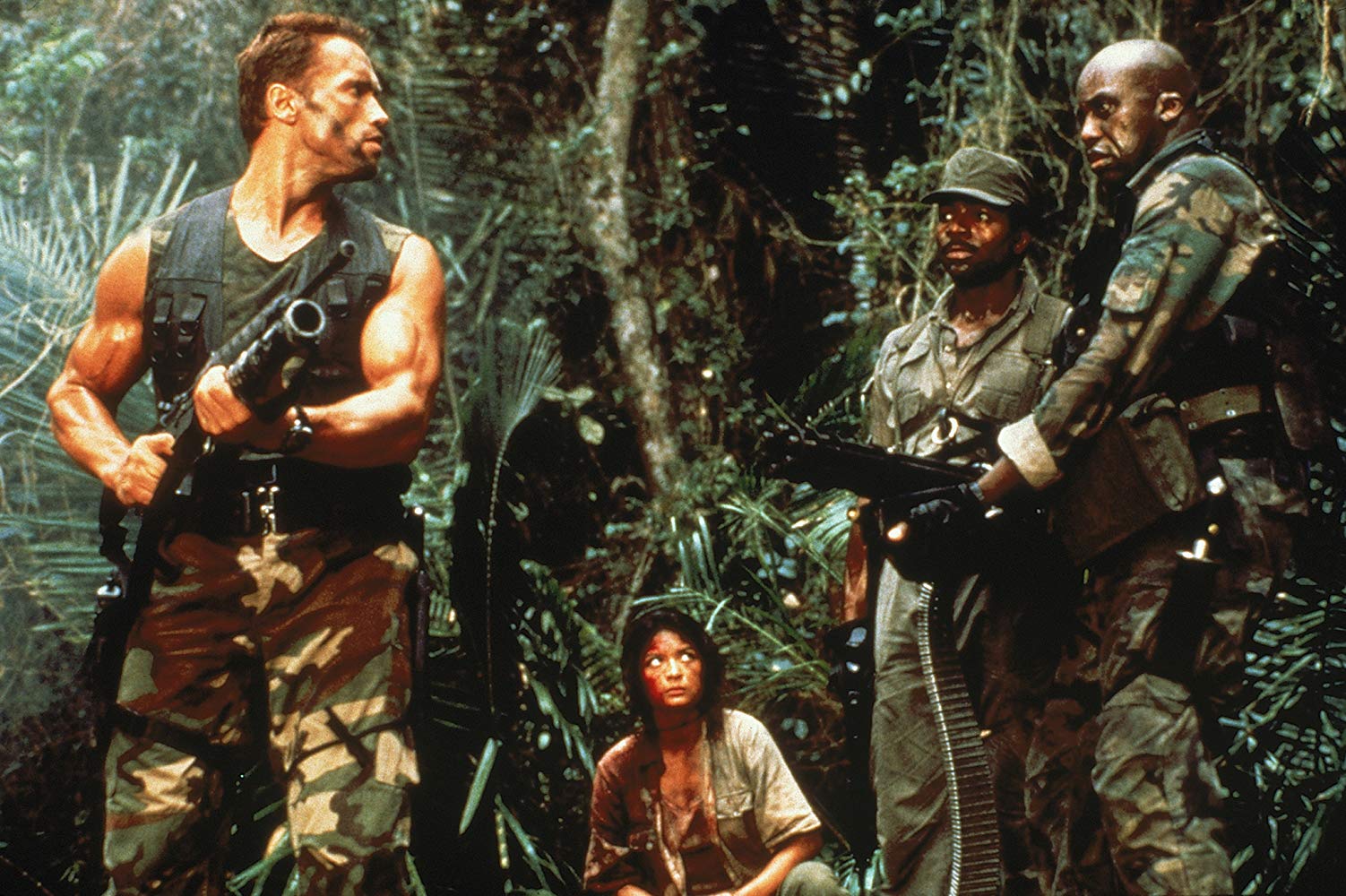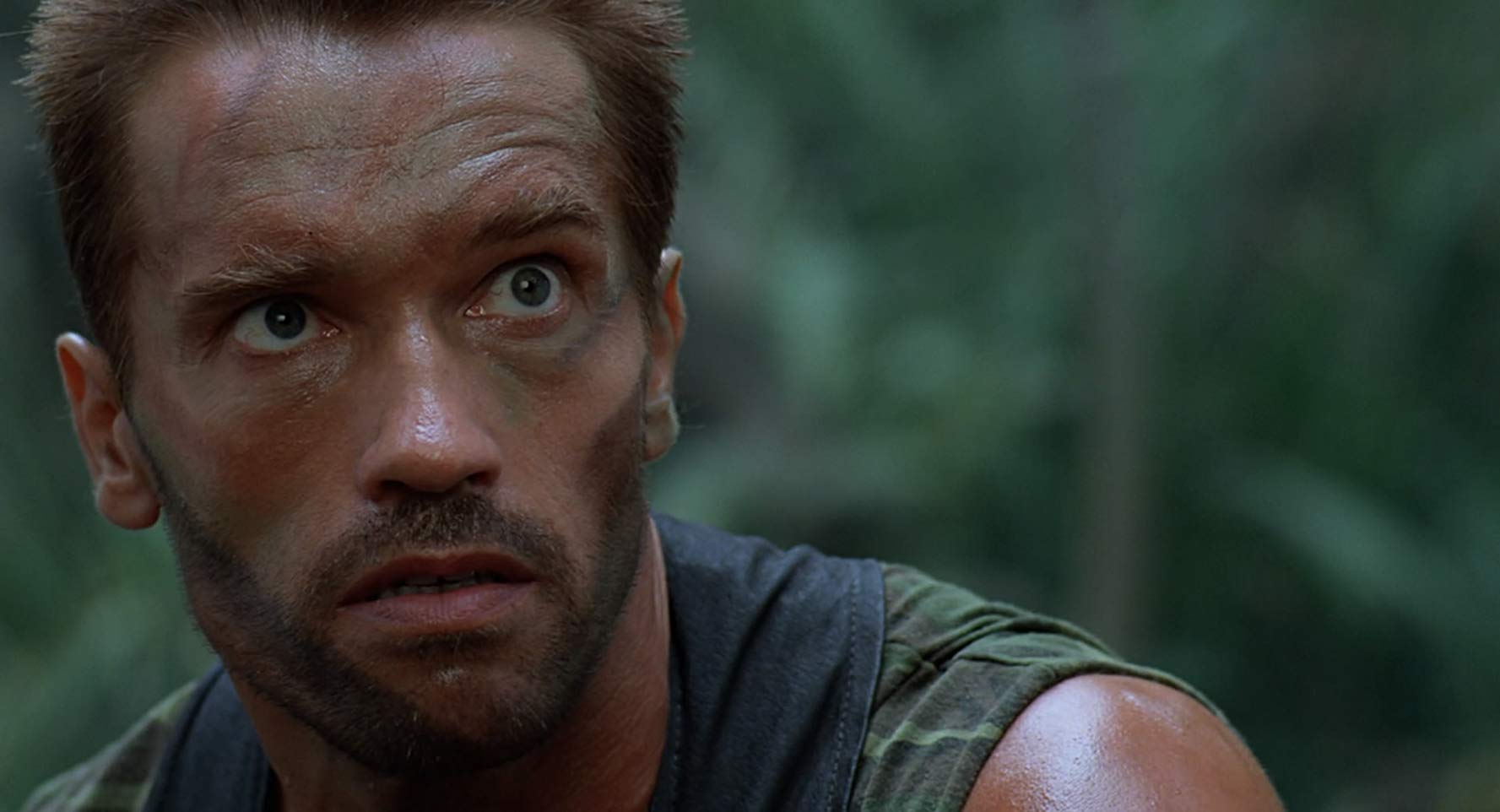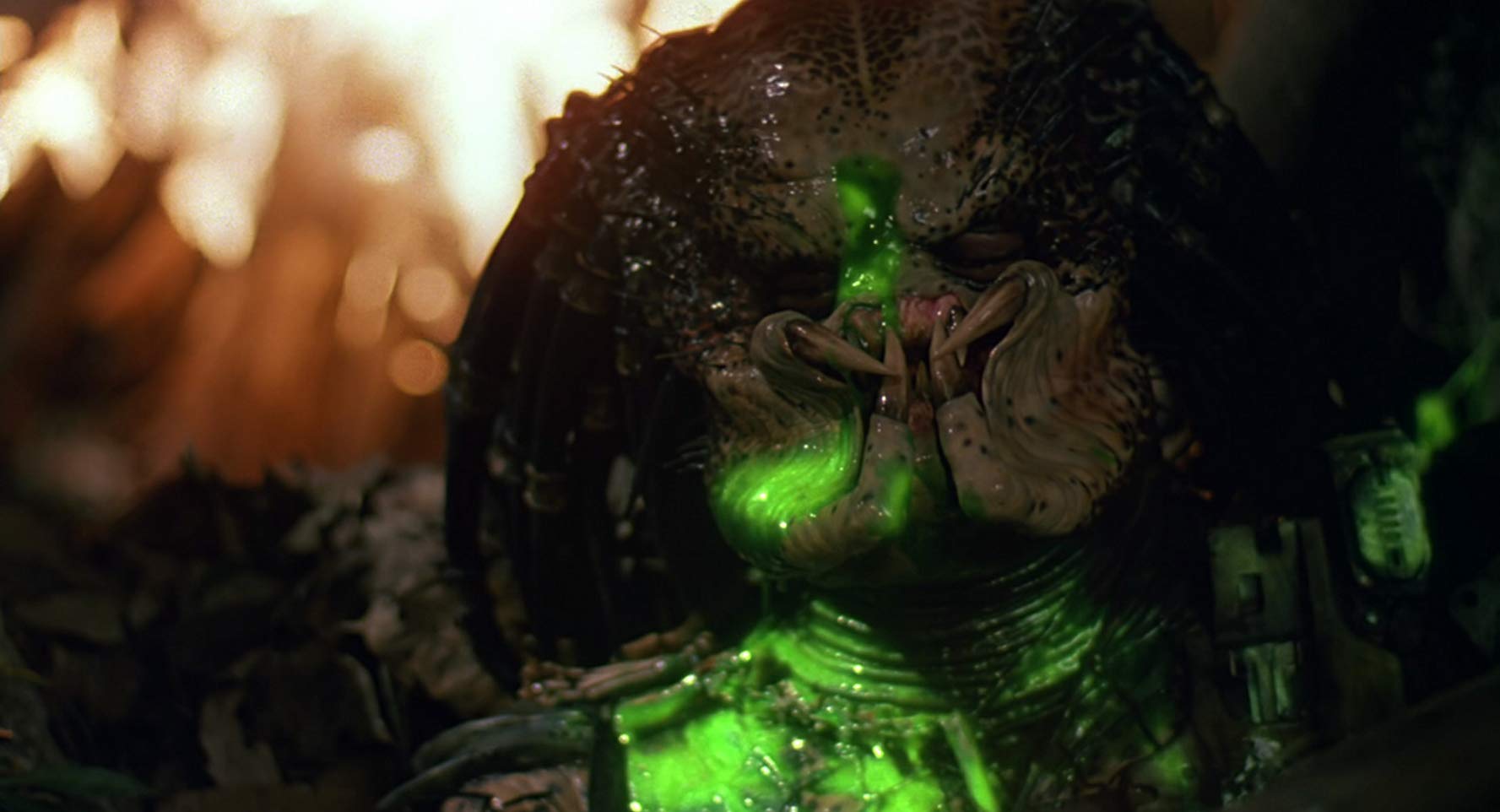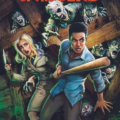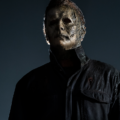“I liked the feeling that it was not that far from King Kong… a bunch of guys go to an island and go deeper and deeper in… and the thing they’re chasing after happens to be a lot bigger than they thought…” director John McTiernan reflects during the DVD commentary of Predator, his breakthrough film, which ultimately ended up putting the troubled future filmmaker of such adrenaline-fuelled masterworks as Die Hard and The Hunt For Red October on the cinematic map.
The analogy is an apt one, but it would undoubtedly be doing a disservice to compare the deadly hunter at the heart of this riveting action-cum-science fiction horror film to a giant ape. The mystical sophistication of Stan Winston’s titular chameleon creature creation grants Predator credence above and beyond anything action cinema had thrown against the screen up until that time.
It’s all the more awe-inspiring for keeping said creature out of sight and cleverly camouflaged for most of the running time – building that all-important mystique in the background. And with its advanced ambient-light adjusting cloaking device, homing-in heat vision, together with its colossal stature and reptilian mannerisms (thanks to late 7’2” actor Kevin Peter Hall, who embodied the suit) – not forgetting its eerie ability to mimic human utterances and skin people alive – what a fundamental and terrifying threat the Predator is.
The original creature was far from agile and intimidating, however, as cinematographer Donald McAlpine astutely observed. “I was with the producer Joel Silver and he said ‘come and have a look at this’,” recalls the veteran director-of- photography to SciFiNow. “We went to this room and there was the monster suit, which was just a big green suit, which had a man-type shape and I said, ‘Joel, it looks like a guy in a bloody rat suit!'”
Despite the underwhelming aesthetics of the extraterrestrial, footage was initially shot and subsequently sent to the studio who consequently shut down production. “They immediately contacted the producers onset and said, ‘Close it down. It looks like a guy in a rat suit!'” laughs McAlpine. “To this day Joel Silver believes I rang somebody at the studio and forewarned them!”
Production was put on hiatus for 12 months as a result, with Stan Winston, (fresh from conceiving the innovative designs for both The Terminator and Aliens) appointed as the creature’s new creator. A breakthrough arrived whilst the special effects wizard was sat on a plane next to frequent collaborator James Cameron, with the visionary director revealing that he’d always wanted to see a creature with mandibles. Winston appropriately incorporated fearsome jowls into the now iconic and unmistakably organic guise of the intergalactic humanoid hunter; a ghastly facial aspect that is literally unveiled when the creature removes his own helmet at the end of the suspenseful climax.
But without a formidable cast reacting to such an imposing threat, the consequences onscreen would seem far less terrifying. A Magnificent Seven-ensemble of some of the most macho action men of the Eighties was appointed to embody the predominately ill-fated commandos. The colourful lineup included former Rocky adversary Carl Weathers as the not entirely trustworthy Dillon, bald Commando baddie Bill Duke as Mac, garrulous wrestler and former Navy-SEAL Jesse Ventura (“I ain’t got time to bleed!”) as tobacco-chewing mini-gun toting Sgt. Blain, 48 Hrs antagonist Sonny Landham as the inscrutable Billy, real-life Vietnam veteran Richard Chaves as Poncho and Lethal Weapon scribe (turned future Iron Man 3 director) Shane Black as wise-cracking Hawkins – led of course by the always-intimidating prospect of a young Arnold Schwarznegger, playing cigar-chumping Dutch.
“They were all very interesting characters. Of course Arnie was a young man back then and he had a very interesting sense of humour,” continues McAlpine. “There would often be tension between him and McTiernan about particular things and Arnie used to take me inside his trailer with his Austrian chef and feed me a great meal… then feed me his side of the argument. I generally accepted the meal but not the argument!” he laughs. “I can remember Arnie coming out of his trailer one day and actually storming up to John in an absolute rage! He’d been given new pages that day and so he grabbed him by the shirt and he said, ‘John, I do three words, there’s four here!’ [Laughs] He was protesting a little bit but he always did it was humour.”
A less laughable prospect was that of decidedly temperamental Native American actor Sonny Landham who played Billy – the commando noticeably at one with the jungle. “He had some problems with booze and drugs and they had to sit on him a bit,” continues McAlpine regarding the turbulent actor who had to be appointed a bodyguard for insurance reasons to protect others from his potentially wayward behaviour. “But once again he was great value on the screen. [The bodyguard was there] to ensure he got to work properly the next day. That was the concept. It was sad in truth but particularly in those days you just accepted that sort of shit. Looking back though they were a good bunch of guys to work with.”
McAlpine also has fond memories of working with McTiernan, the recently incarcerated (and released) filmmaker, who was at the top of his game during this period. “He was amazing at that stage and it was a really positive and fun experience,” says the cinematographer who would work with McTiernan again five years down the track on the Sean Connery adventure Medicine Man. “I remember every night being driven back home from the day’s shoot – with the first AD and driver in the front and John and I in the back bonding over a bottle of scotch. It was just really good fun and we were dedicated to the work. But I met him later down the line and John’s character started to change a little bit. He became more morose and it was a shame because that sort of element was the thing that actually became his undoing, I guess.”
The hiatus in production on Predator turned out to be hugely advantageous, with two months (instead of the planned two weeks) spent fine-tuning a nail-biting dialogue-free man-against-monster climax, which sees sole surviving commando Dutch attempt to outwit the intergalactic hunter. “McTiernan had a very clear design – he had the gift and did it on a couple of movies around that period,” observes McAlpine. “He had the ability to use the cinema to create that. Even in his first film out of film school, which was the same sort of genre (the 1986 Pierce Brosnan-headlining supernatural horror Nomads) he had the tension layered upon tension.
Things proved more problematic with the attempt to visualise onscreen the unique concept of the creature’s infrared heat vision, however. “There was a whole lot of secrecy about special effects back then – everyone had their own little world and they were never going to share it,” reveals McAlpine. “The effects company had developed this heat camera that was standard scientific equipment at that stage. They developed it to high-res and they had a heat camera element alongside a normal film camera. They shot tests in New York in Central Park and they came over and shot tests in LA for the studio. Then they came down into the jungle and set it up.”
Unbeknownst to the crew at the time, the cameras began to register the heat of the entire jungle. “Eventually I found out that in the jungle everything is 92 degrees and it all registered monochrome,” reveals McAlpine. “The next morning we got to the set and there were about four big water tankers with Mexicans on the top with blocks of ice putting it into water to chill it and they’re spraying the jungle with big fire hoses! They set the camera up again, however it still didn’t work! So it was a very big cost to the studio.”
Finally the effect was achieved in post- production. “In actual fact that was some of the very earliest computer-generated effects,” says the cinematographer. “It was done off a guy in a green suit but anything back in the jungle was very infantile CG work.”
The genius of the film Predator is how it starts out as a relatively unassuming Commando-style action film, then switches gears without warning halfway through with a sudden burst of science fiction, followed by some slasher horror tropes as the otherworldly creature hunts down each of the human characters individually. “As the group diminishes we didn’t need [as much] room for them to perform in,” continues McAlpine. “That was the trouble of course – when you had the full group you had to have enough room to see them all, they couldn’t just be behind the trees.”
The Mexican jungle locale proved a technical challenge too. “It was a pretty rough location but technically it was very interesting because you couldn’t use any lighting. We had the best of fun shooting it. The jungles are so dense that if you put up a light all you do is create shadows and so basically 99 percent of it was done with available light in the jungle.”
This article first appeared in issue 130 of SciFiNow.
Predator is out now on DVD and Blu-ray from 20th Century Fox.
